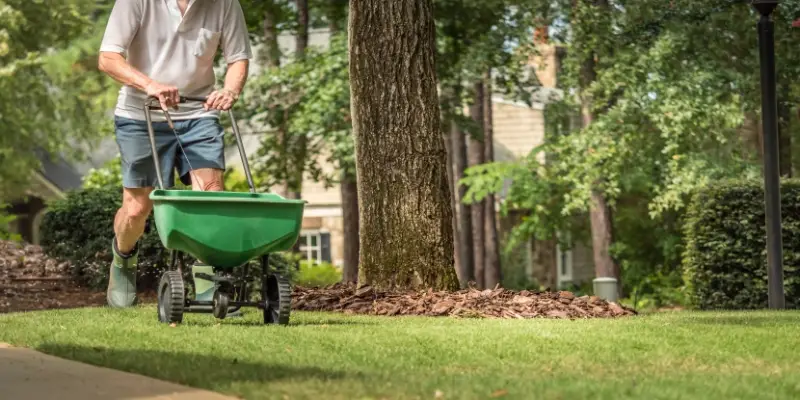
Canadian homeowners know that we need to make the most of the months when we can fully enjoy our yards. When it comes to your lawn, the best way to keep it as healthy as possible during the warm months is with regular fertilization.
Typically, you should fertilize your lawn every 6 to 8 weeks. You can begin in early spring, once the weather is consistently warm, as part of your seasonal clean-up. Then you can follow up with applications throughout the growing season before it snows.
Different seasons will require different fertilizer components, depending on whether you want to feed the roots or the blades of grass.
As with all yard work, you can dive in on your own or call on a professional to take care of it for you. If you choose the DIY route, there are several steps you’ll need to follow.
DIY Fertilizing
Equipment
Before you get started, you’ll need to make sure you have the right equipment on hand. You should never spread fertilizer by hand. Instead, investing in a spreader (a walk-behind tool that spreads the fertilizer neatly and evenly) will make your job much easier and lead to better results.
Soil Testing
Next, you should have your soil tested – either by a professional lab or with a home testing kit. This will help you determine which fertilizer is best for your lawn.
Measure Your Lawn
Knowing the actual size of the lawn area to be covered will determine how much fertilizer is needed for your specific lawn. A measuring wheel or tape measure can help determine the area to be covered and the volume of fertilizer to be applied.
Find Your Fertilizer
All fertilizers contain three key nutrients: nitrogen (N), phosphorus (P), and potassium (K). Once you know what ratio of these nutrients would benefit your lawn most, you can check the numbers on the fertilizer bag to match what you need.
For example, a fertilizer with a ratio of 10-0-5 means it contains 10 percent nitrogen, 0 percent phosphorus, and 5 percent potassium.
Fertilizers also incorporate different “release” times when they are manufactured. Slower-release fertilizers last longer and are released slowly over time. Other fertilizers release quickly for a burst of green colour that will need to be replenished with more frequent applications.
Apply the Fertilizer
When using a granular fertilizer, follow the directions on the fertilizer bag to measure out the right amount for your yard. Fill the spreader and choose a starting point at one end of your yard to begin applying the fertilizer. It’s best to walk at a steady pace so the fertilizer is applied consistently across the lawn. Broadcast spreaders apply a more even coverage than drop spreaders. Speak with your local supplier to determine what type of spreader is best for your lawn.
Make sure to shut off the spreader when you travel over the pavement. If any fertilizer spills onto your driveway or sidewalk, sweep it back onto the grass and spread it out evenly to avoid burning the lawn.
Water
Depending on the type of fertilizer you’re using, you may need to water the lawn when you’re done. Check the instructions on the label to see if watering is recommended, and how much.
Professional Fertilizing
The DIY approach isn’t right for everyone. You may struggle to fit regular fertilization into your already busy yard work routine. Or, you may be worried that even with the extra effort, you won’t see the results you want.
If this is the case, your best bet is to consider a professional fertilization service. The lawn care professionals at The Grounds Guys work closely with you to develop a customized treatment plan for your lawn and use high-quality fertilizers that yield the best results.
The best part is, inexperienced hands, you can be assured your lawn will be healthy, vibrant, and ready for you to enjoy throughout the warm months.